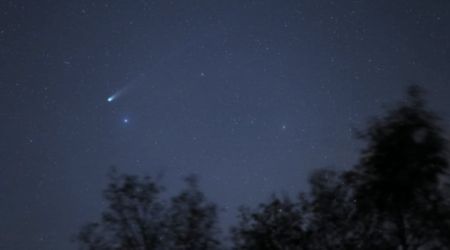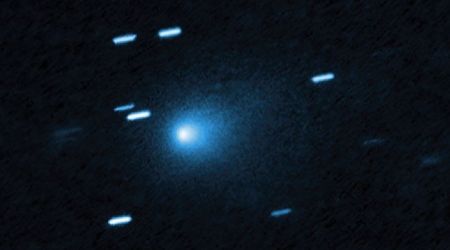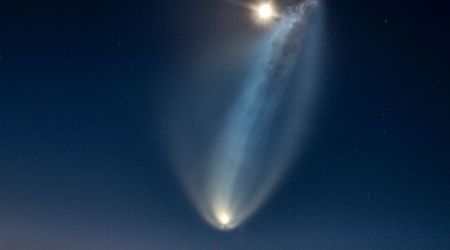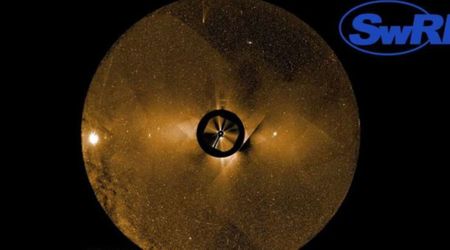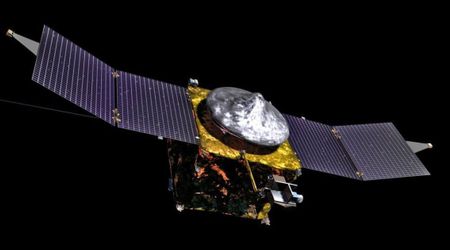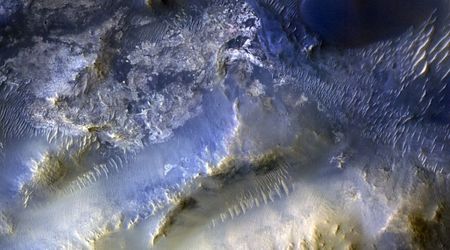James Webb Telescope uncovers Jupiter moon Europa's surprisingly dynamic and shifting ice shell

New findings from the James Webb Space Telescope, corroborated by laboratory experiments, suggest that Europa, one of Jupiter's largest moons, possesses a highly active and constantly evolving icy surface. This challenges previous assumptions about Europa's ice shell and provides compelling evidence for a subsurface liquid ocean, per EurekAlert.

Researchers, spearheaded by Dr. Ujjwal Raut of the Southwest Research Institute (SWRI), have analyzed spectral data from JWST, indicating that Europa's surface ice undergoes varying rates of crystallization. This phenomenon points to a complex interplay of external forces and internal geological processes shaping the moon's exterior. Unlike Earth's uniformly crystalline ice, Europa's surface is perpetually bombarded by charged particles, converting some of its crystalline ice into an amorphous state. Dr. Raut's team conducted extensive laboratory experiments, detailing the timescales of this amorphization and subsequent recrystallization. These experiments were particularly crucial in understanding Europa's "chaos terrains," regions characterized by a jumbled mix of ridges, cracks, and plains.
A significant revolution from this research is the presence of crystalline ice not just beneath a thin amorphous layer, as previously thought, but also directly on the surface in certain areas, notably Tara Regio. “We think that the surface is fairly porous and warm enough in some areas to allow the ice to recrystallize rapidly,” stated Dr. Richard Cartwright, lead author of the paper published in The Planetary Science Journal and a spectroscopist at Johns Hopkins University’s Applied Physics Laboratory. He added that Tara Regio exhibits "a lot of other unusual things, including the best evidence for sodium chloride, like table salt, probably originating from its interior ocean. We also see some of the strongest evidence for CO2 and hydrogen peroxide on Europa. The chemistry in this location is really strange and exciting.”

Dr. Raut emphasized the internal origin of these materials, suggesting a connection to a subsurface ocean located approximately 20 miles (30 kilometers) beneath the moon's thick shell. “This region of fractured surface materials could point to geologic processes pushing subsurface materials up from below," Raut explained. "When we see evidence of CO2 at the surface, we think it must have come from an ocean below the surface. The evidence for a liquid ocean underneath Europa’s icy shell is mounting, which makes this so exciting as we continue to learn more.” Further analysis of the carbon dioxide in Tara Regio reveals the presence of both common carbon-12 and the rarer, heavier isotope carbon-13. According to Cartwright, while the source of carbon-13 is difficult to explain, all indications point to an internal origin, aligning with other hypotheses regarding the carbon-12 detected in Tara region.
The timing of these findings is particularly significant as NASA's Europa Clipper mission is currently en route to the Jovian moon. Expected to arrive in April 2030, the spacecraft will conduct numerous flybys, progressively nearing Europa's surface. Its primary objective is to collect vital data about the subsurface ocean believed to be hidden beneath the moon's icy crust, as reported on Space.com.

These discoveries also offer a compelling explanation for the puzzling distribution of hydrogen peroxide across Europa, as mentioned by Southern Research Institute. Furthermore, these insights have broader implications, potentially enhancing our understanding of hydrogen peroxide's presence on other icy celestial bodies, including Jupiter's moon Ganymede and Pluto's moon Charon, where both hydrogen peroxide and carbon dioxide have been detected.
